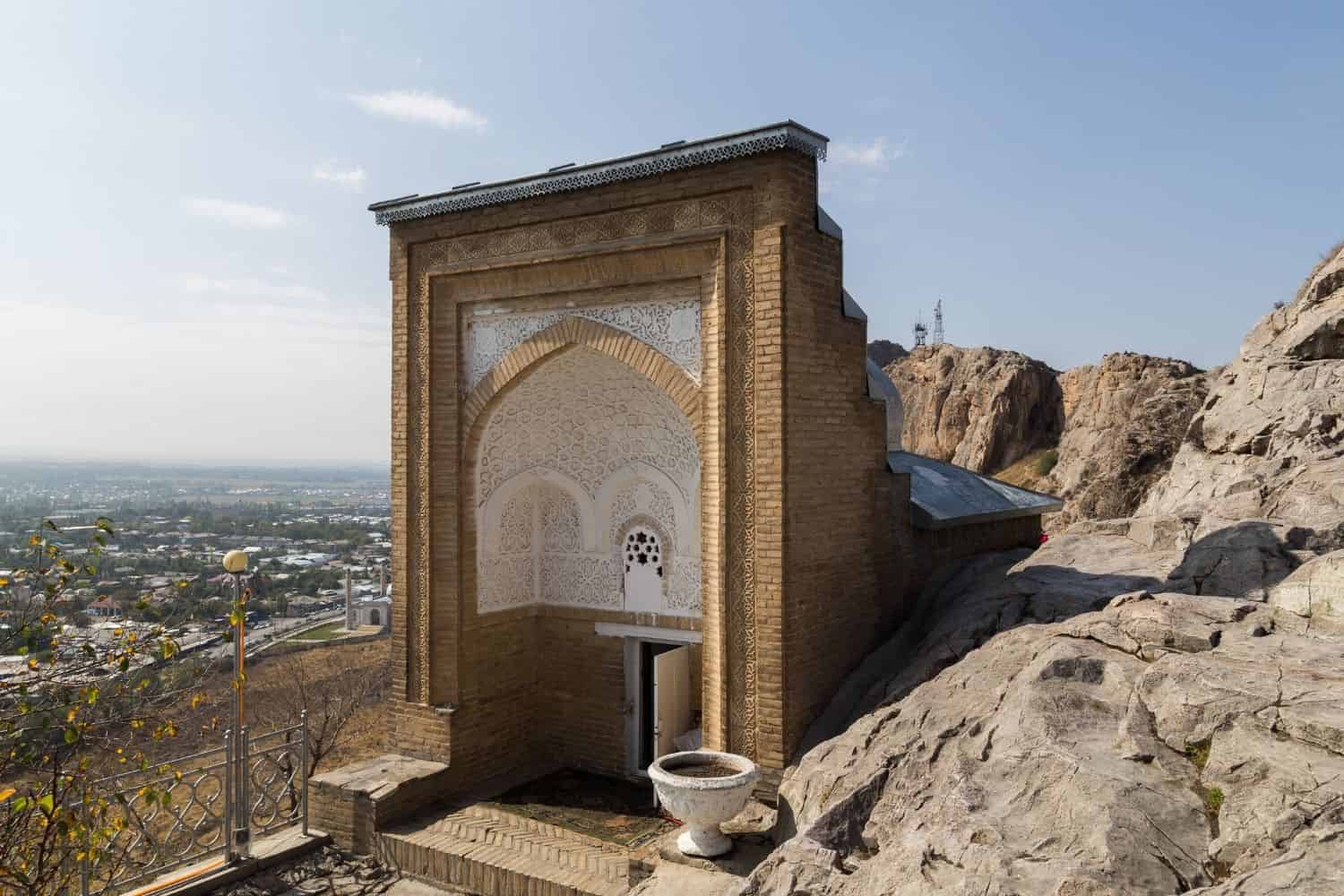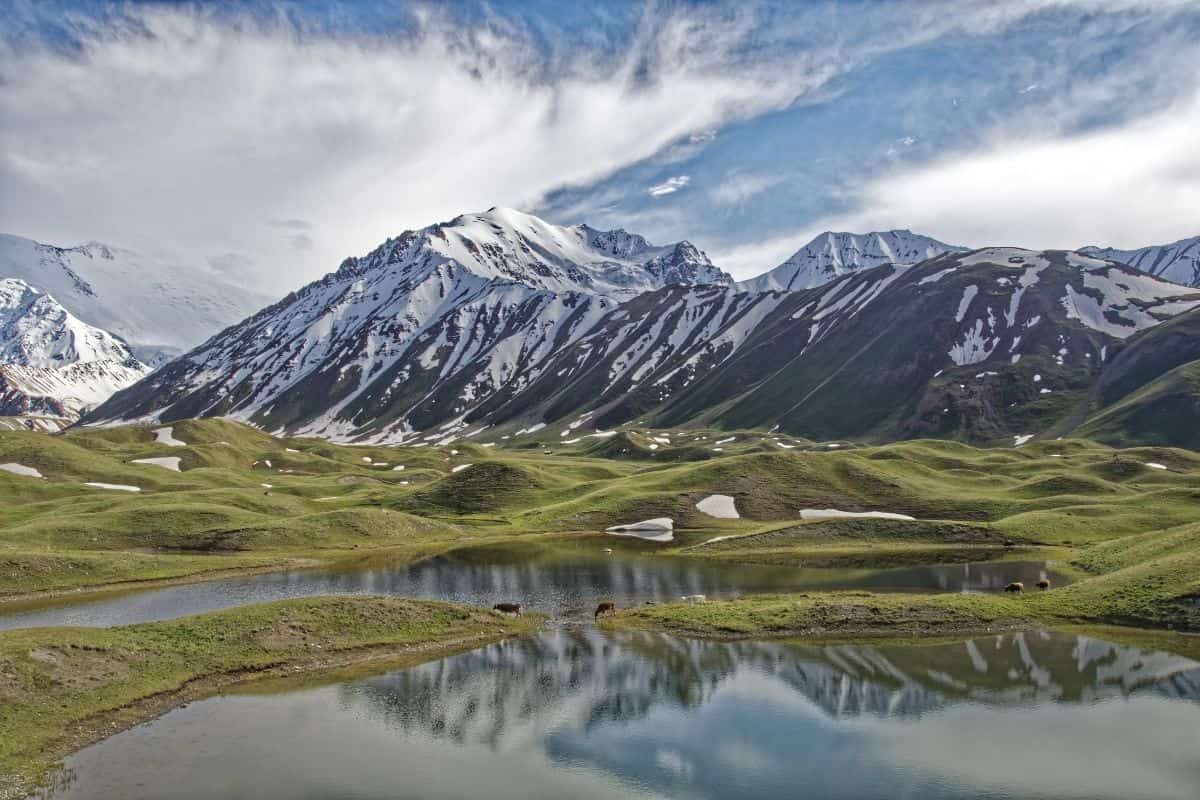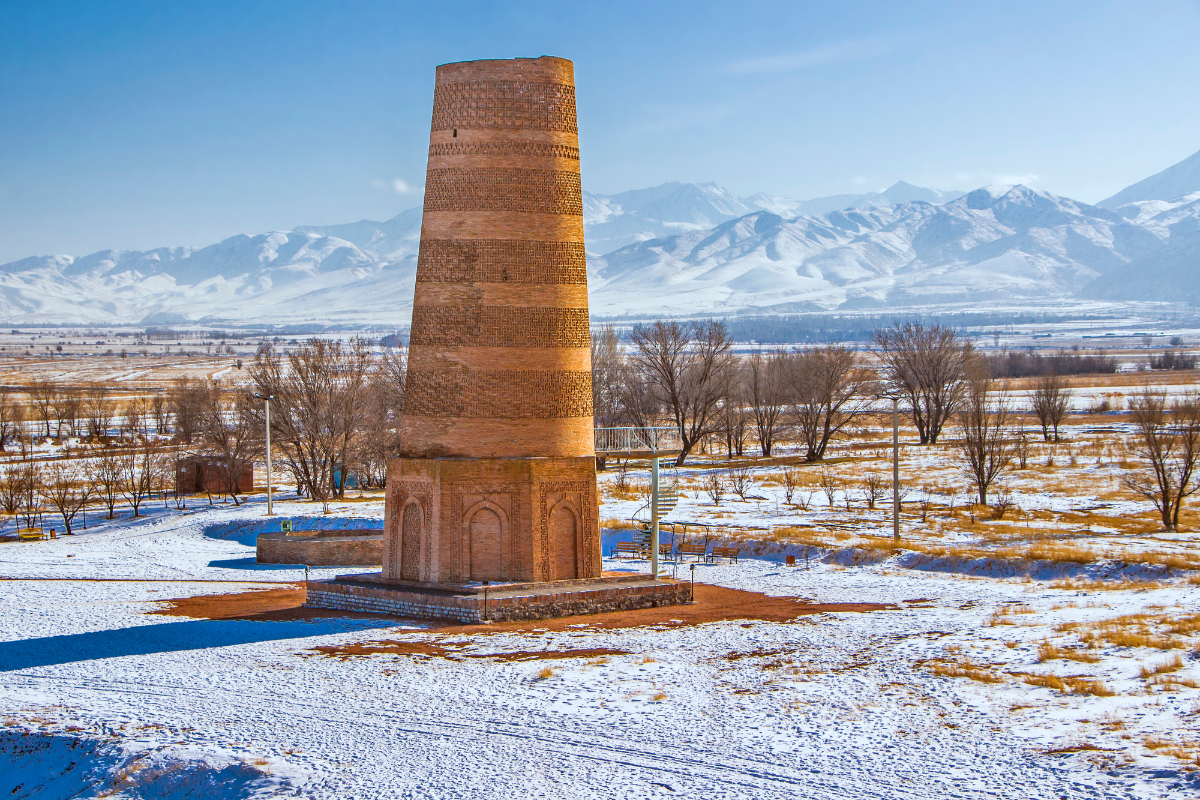Table of Contents
The geography of Kyrgyzstan is a captivating blend of diverse landscapes and historical significance. Situated in Central Asia, this nation’s geographic location has played a pivotal role in shaping its history and cultural identity.
Nestled amidst the towering peaks of the Tien Shan mountains, Kyrgyzstan geography beckons adventurous travelers with its vast steppes, stunning alpine lakes, and rich nomadic traditions. From exploring the breathtaking vistas of Issyk-Kul to delving into the cultural tapestry of Bishkek, Kyrgyzstan’s diverse landscapes and rich history offer an unforgettable journey for intrepid tourists seeking a unique and enriching experience.
The physical geography of Kyrgyzstan paints a picture of awe-inspiring natural masterpieces. From the serene shores of Song Kol Lake, representing the nation’s rich aquatic heritage, to the diverse ecosystems that span from high mountain meadows to arid valleys, Kyrgyzstan stands as a testament to nature’s grandeur.
Top Geographic Features of Kyrgyzstan
- Tian Shan Mountain Range: The impressive Tian Shan range spans much of Kyrgyzstan, influencing its topography and climate. It is home to Jengish Chokusu, the highest peak in the country, and the northern Tian Shan.
- Naryn River: One of Kyrgyzstan’s major rivers, the Naryn flows through the central part of the country, providing vital water resources for agriculture and irrigation.
- Fergana Valley: This fertile lowland region stretches between Kyrgyzstan, Uzbekistan, and Tajikistan and plays a key role in Kyrgyzstan’s agricultural activities, especially cotton farming.
- Song-Köl Lake: Located in central Kyrgyzstan, this alpine lake is set amidst meadows and is known for its stunning beauty and unique flora and fauna.
- Ala-Archa Gorge: Found just south of the capital, Bishkek, this scenic gorge is part of the Tian Shan range and is a popular destination for trekking and climbing.
- Issyk-Kul Lake: This vast lake in eastern Kyrgyzstan is the world’s second-largest alpine lake. With its stunning beauty and beaches, it’s a prime attraction in the region.
- Chu River: An essential river in Kyrgyzstan, the Chu River flows through the northern part of the country and plays a significant role in agriculture and irrigation.
- Sulayman Mountain: Located in Osh, this sacred mountain is a significant pilgrimage site and is listed as a UNESCO World Heritage Site.
- Tash Rabat Caravanserai: Situated in the Naryn region, this ancient stone inn once served as a resting place for merchants and travelers on the Silk Road.
- Arslanbob Forest: The world’s largest natural walnut forest, this area in southern Kyrgyzstan boasts a diverse range of flora and fauna and plays a crucial role in the country’s ecology.
Kyrgyzstan geographic features play an essential role in shaping Kyrgyzstan’s landscape, climate, and cultural history, making them defining elements in the country’s geography.
Kyrgyzstan Geography
Exploring the Kyrgyzstan National Geographic canvas reveals a breathtaking array of geographic features. From the towering Tien Shan mountains to the expansive Fergana Valley and the serene Issyk-Kul Lake, the country presents a captivating tapestry of natural wonders.
- Mountain Ranges – The Crown of Diversity: Just as documentaries often highlight grand mountain ranges, Kyrgyzstan is home to the impressive Tien Shan range. These rugged peaks not only add to the country’s scenic beauty but also boast unique biodiversity and have played a pivotal role in shaping its cultural identity.
- Lakes – A Kaleidoscope of Colors: Kyrgyzstan’s Issyk-Kul National Park, with its shimmering high-altitude lake, echoes the scenic landscapes captured in photographs. These pristine waters, bordered by forests and mountains, mirror the country’s geological richness.
- Valleys – Expansive Basins of Life: Much like documentaries showcasing vast terrains, Kyrgyzstan’s Fergana Valley highlights expansive landscapes that are home to diverse wildlife. This fertile region narrates tales of nomadic traditions and the nation’s agricultural history.
- Historical Sites – Unveiling the Past: Kyrgyzstan’s historical sites, like the ancient caravanserai of Tash Rabat, recall journeys that delve into age-old civilizations. These remnants stand as a testament to the nation’s rich Silk Road heritage.
- Ethnic Diversity – A Cultural Melting Pot: In line with the National Geographic focus on varied cultures, Kyrgyzstan is a blend of ethnic groups, including Kyrgyz, Uzbeks, and Russians. Each community brings forward unique traditions, languages, and customs, crafting a colorful cultural patchwork.
- Wildlife – A Sanctuary for Nature: Kyrgyzstan’s protected areas, such as the Sarychat-Ertash State Nature Reserve, mirror the emphasis on wildlife conservation. These zones act as vital habitats for varied species, safeguarding biodiversity in a diverse environment.
- Geological Marvels – A Natural Showcase: The country’s natural wonders, like the Barskoon waterfall, illustrate Kyrgyzstan’s raw beauty amidst the towering Tien Shan. Such landmarks exhibit the vibrant forces of nature in play.
- Remote Exploration – Uncharted Territories: The remote and untouched regions of the Pamir-Alay beckon adventurers, evoking images of journeys into pristine lands. This vast area offers a peek into untouched landscapes and distinct ecosystems.
Kyrgyzstan geographic features are defined by the imposing presence of the Tien Shan mountain range. These majestic peaks, which stretch across the country, form a striking backdrop for its varied topography. Ancient trade routes, like the Silk Road, meander through these formidable mountains, connecting parts of Asia.
Winding gracefully through the Kyrgyz terrain are significant rivers like the Naryn and the Kara Darya, essential for agriculture and irrigation. Additionally, the lush Fergana Valley and the high-altitude deserts add to the country’s diverse geography.
Kyrgyzstan Geographic Location
Kyrgyzstan geographic location is very strategic, and its position has played a significant role throughout history. Located in Central Asia, the country has been a nexus for trade, culture, and ideas, emphasizing its historical importance.
Borders of Kyrgyzstan
Kyrgyzstan shares borders with four countries. Here is Kyrgyzstan physical geography with the neighboring countries and the approximate total length of each border:
- Kazakhstan: The border between Kyrgyzstan and Kazakhstan is approximately 1,212 kilometers long, making it the longest international border for Kyrgyzstan.
- China: The border between Kyrgyzstan and China is approximately 1,063 kilometers long.
- Tajikistan: The border between Kyrgyzstan and Tajikistan is approximately 984 kilometers long.
- Uzbekistan: The border between Kyrgyzstan and Uzbekistan is approximately 1,099 kilometers long.
| Kyrgyzstan Neighboring Country | Border Length (Approximate) |
|---|---|
| Kazakhstan | 1,212 kilometers |
| China | 1,063 kilometers |
| Tajikistan | 984 kilometers |
| Uzbekistan | 1,099 kilometers |
These international borders define Kyrgyzstan’s connections to different regions and contribute to the country’s geopolitical significance as a crossroads between Central Asia and its neighboring regions.
Geography of Bishkek Kyrgyzstan
As the capital city of Kyrgyzstan, Bishkek is a captivating microcosm of the country’s human geography. Here, various ethnic groups, including Kyrgyz, Uzbeks, Russians, and Dungans, coexist, contributing to the city’s vibrant cultural tapestry.
Bishkek, the capital city of Kyrgyzstan
- City of Contrasts: Bishkek is known for its stark contrasts, where modern buildings coexist with traditional neighborhoods, creating a unique blend of old and new.
- Chu River: The Chu River is near the city, playing a significant role in its trade and transportation.
- Bishkek’s Elevation: The city is located at an elevation, surrounded by the vast Tian Shan mountain ranges.
- Green Spaces: Bishkek is home to several beautiful parks and gardens, including Ala-Too Square, offering a serene escape amidst the bustling city.
- Bishkek’s Historical Significance: With a history deeply rooted in ancient times and the Silk Road, Bishkek has witnessed various epochs and played a pivotal role in Central Asian politics and trade.
- Diverse Architecture: The city showcases a diverse architectural heritage, reflecting influences from Soviet, Kyrgyz, and modern styles.
- Traditional Music and Dance: Bishkek celebrates its traditional music and dance, which can be seen and heard throughout the city.
- Ala-Too Square: The historic Ala-Too Square, located in the heart of the city, is an iconic symbol of Kyrgyzstan’s political history.
- Bishkek’s Economy: The city serves as Kyrgyzstan’s economic and cultural hub, attracting people from all over the country seeking opportunities and education.
- Population Growth: Bishkek has experienced steady population growth, with a significant influx of migrants from various regions, leading to urbanization and infrastructure challenges.
Historical Geographical Importance of Kyrgyzstan
Throughout the ages, Kyrgyzstan’s geographical significance has made it a sought-after stage for historical drama. As empires and nations rose and fell, from the Mongols to the indigenous tribes and Russian settlers, Kyrgyzstan’s geographic position played a pivotal role in shaping the world’s history.
- Strategic Gateway: Kyrgyzstan geographic location as a gateway between Central Asia and the vast expanse of the Silk Road has made it a strategic point for trade, cultural exchange, and military endeavors throughout history.
- Ancient Trade Routes: The Silk Road routes passed through Kyrgyzstan, connecting various cultures and facilitating the exchange of goods, ideas, and cultures.
- Mongol Expansion: Kyrgyzstan was a crucial territory during the Mongol expansion in the 13th century, as they sought to expand their vast empire.
- Wars of Independence: During the 20th century, Kyrgyzstan became a focal point for its fight for independence from Soviet rule.
- Russian Settlement: Kyrgyzstan’s geographic position attracted significant Russian migration during the Tsarist and Soviet eras, shaping its culture and demographics.
- Influence of Indigenous Tribes: Kyrgyzstan was home to various indigenous groups, including the Kyrgyz, Uzbeks, and Tajiks, influencing its early history and culture.
- Conquests of the Mongols and Russians: The invasions of the Mongols and later the Russians had a profound impact on Kyrgyzstan’s history, leading to a blend of cultures and traditions.
- The Tian Shan Mountains and Nomadic Traditions: The vast mountain ranges of Kyrgyzstan, including the Tian Shan, and the nomadic traditions of its people have become symbols of the nation’s cultural and historical identity.
- Influence of Traditional Music: Kyrgyzstan’s position as a crossroads of cultures gave birth to a unique blend of traditional music that has since captivated the region, influencing its culture, art, and architecture.
The geographical position of Kyrgyzstan is a mosaic of natural splendor and historical significance. With its breathtaking mountainscapes, the Silk Road’s legacies, and diverse cultural tableau, this landlocked nation captivates those who seek the beauty of Central Asia. Despite hurdles, Kyrgyzstan remains an enticing destination for adventurous travelers and history enthusiasts alike, drawn to its blend of alpine majesty and cultural depth.
In conclusion, Kyrgyzstan’s geographical prominence has been a backdrop for historical narratives, with various empires and cultures intersecting and leaving their imprint on the country’s heritage. Its strategic location has been instrumental in shaping pivotal historical events and continues to be significant in the geopolitics of Central Asia today.








